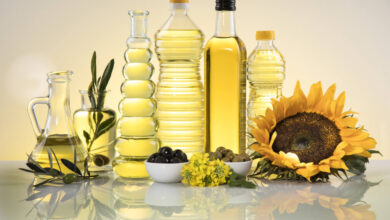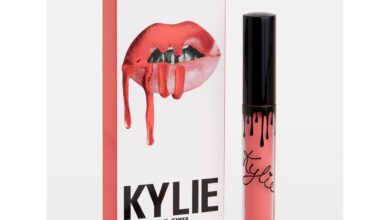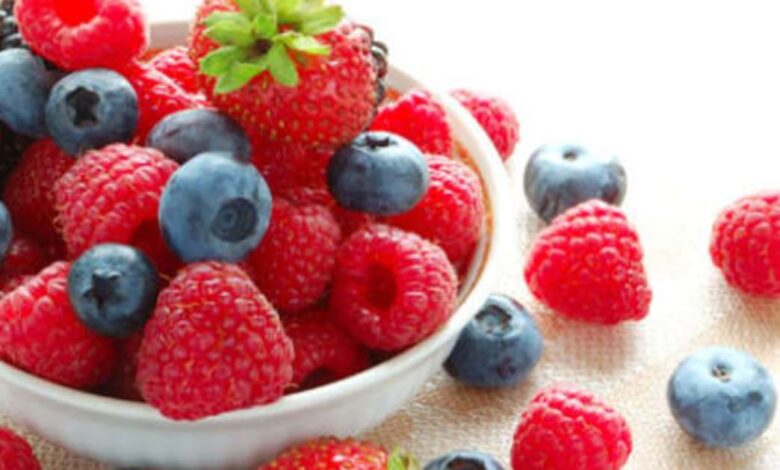
7 Purple Foods Bursting with Anthocyanin Benefits
7 Purple Foods Bursting with Anthocyanin Benefits – Have you ever noticed how vibrant purple foods are? They’re not just eye-catching; they’re packed with powerful antioxidants called anthocyanins. These pigments are responsible for the rich color, and they offer a range of health benefits.
From boosting heart health to protecting your brain, these purple powerhouses are worth adding to your diet.
This article delves into the world of purple foods, highlighting seven standouts that are rich in anthocyanins. We’ll explore their unique characteristics, health benefits, and delicious ways to incorporate them into your meals. So, get ready to discover the fascinating world of purple and unlock the potential of these vibrant foods.
The Power of Purple: 7 Purple Foods Bursting With Anthocyanin Benefits
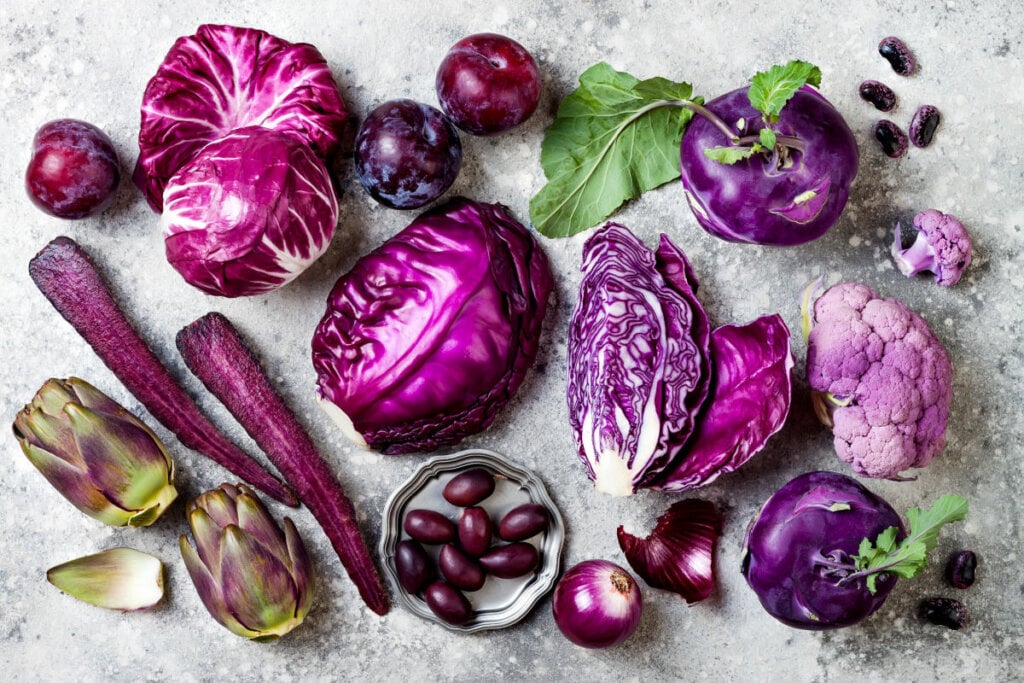
Purple isn’t just a pretty color; it’s a powerful indicator of health-boosting compounds called anthocyanins. These pigments, responsible for the vibrant hues of blueberries, eggplant, and other purple delights, are packed with antioxidants that can benefit your body in countless ways.Anthocyanins are plant pigments that belong to a larger group called flavonoids.
They are found in abundance in fruits, vegetables, and even grains. These pigments act as natural protectors for plants, shielding them from harmful UV rays and infections. But for us humans, anthocyanins offer a range of benefits, from boosting brain function to protecting against chronic diseases.
Why Purple Foods Are Rich in Anthocyanins
The vibrant purple color of these foods is a direct result of their high anthocyanin content. These pigments are water-soluble and readily absorbed by our bodies, making them readily available to provide their numerous health benefits. The amount of anthocyanins in a food varies depending on factors such as variety, growing conditions, and ripeness.
For instance, blueberries, known for their intense blue-purple color, are particularly rich in anthocyanins.
The 7 Purple Powerhouses
The vibrant hues of purple fruits and vegetables are more than just a feast for the eyes; they signal the presence of powerful antioxidants called anthocyanins. These pigments, responsible for the deep purple color, offer a range of health benefits, from boosting heart health to protecting against cognitive decline.
Let’s embark on a culinary journey to discover the unique flavors, textures, and versatility of these purple powerhouses.
The 7 Purple Powerhouses: A Culinary Tour
These seven purple foods, each with its own unique flavor and texture, are packed with anthocyanins and offer a variety of health benefits. Let’s delve into the details:
| Food | Anthocyanin Content (mg/100g) | Key Benefits | Serving Suggestions |
|---|---|---|---|
| Purple Yam | 150-250 | Antioxidant, Anti-inflammatory, Digestive Health | Roasted, Mashed, Juiced, Smoothies |
| Blackberries | 140-200 | Antioxidant, Anti-inflammatory, Immune Support, Cardiovascular Health | Fresh, Frozen, Juiced, Smoothies, Yogurt, Desserts |
| Eggplant | 10-20 | Antioxidant, Anti-inflammatory, Cholesterol Reduction, Blood Sugar Control | Roasted, Grilled, Stuffed, Sauteed, Curries |
| Red Cabbage | 100-150 | Antioxidant, Anti-inflammatory, Digestive Health, Heart Health | Salads, Coleslaw, Sauerkraut, Braised, Stir-fries |
| Beets | 100-150 | Antioxidant, Anti-inflammatory, Blood Pressure Regulation, Liver Health | Roasted, Pickled, Juiced, Smoothies, Salads |
| Purple Sweet Potatoes | 100-200 | Antioxidant, Anti-inflammatory, Immune Support, Eye Health | Roasted, Mashed, Baked, Fries, Smoothies |
| Blueberries | 100-150 | Antioxidant, Anti-inflammatory, Brain Health, Memory Enhancement | Fresh, Frozen, Juiced, Smoothies, Yogurt, Muffins, Pancakes |
Purple YamThis starchy root vegetable, often referred to as “Ube” in Filipino cuisine, has a sweet and slightly nutty flavor. Its texture is creamy and smooth when cooked. Purple yams are incredibly versatile and can be used in a wide array of dishes, from desserts like cakes and ice cream to savory dishes like soups and stews.
In the Philippines, purple yam is used to make a popular dessert called “Ube Halaya” which is a sweet, creamy spread. BlackberriesThese tiny, dark berries are bursting with flavor, offering a sweet and tart combination. Their texture is soft and juicy, making them perfect for enjoying fresh or adding to smoothies, yogurt, and desserts.
Blackberries are also rich in fiber, vitamin C, and potassium. In some cultures, blackberries are used to make jams, jellies, and syrups. EggplantThis versatile vegetable has a mild, slightly bitter flavor and a spongy texture. When cooked, eggplant absorbs flavors beautifully, making it a perfect ingredient for stews, curries, and dips.
Eggplant is a good source of fiber, potassium, and folate. In Middle Eastern cuisine, eggplant is often used in dishes like baba ghanoush, a creamy dip made with roasted eggplant, tahini, and garlic. Red CabbageThis crunchy, leafy vegetable has a sweet and slightly peppery flavor.
Its vibrant color adds a pop of visual appeal to salads and other dishes. Red cabbage is a good source of vitamin C, vitamin K, and fiber. In German cuisine, red cabbage is often braised with apples and spices to create a flavorful side dish.
BeetsThese earthy root vegetables have a sweet and slightly earthy flavor. Their texture is firm and tender when cooked. Beets are a good source of folate, potassium, and nitrates. In some cultures, beets are used to make borscht, a traditional Eastern European soup.
Purple Sweet PotatoesThese sweet potatoes have a vibrant purple flesh and a sweet, slightly earthy flavor. Their texture is similar to regular sweet potatoes, becoming soft and creamy when cooked. Purple sweet potatoes are a good source of vitamin A, vitamin C, and fiber.
In some cultures, purple sweet potatoes are used to make a variety of desserts, including cakes, pies, and puddings. BlueberriesThese tiny, blue berries are packed with flavor, offering a sweet and slightly tart taste. Their texture is soft and juicy, making them perfect for enjoying fresh or adding to smoothies, yogurt, and desserts.
From blueberries to purple potatoes, those vibrant hues signal a bounty of anthocyanins, powerful antioxidants linked to a range of health benefits. And when the weather turns chilly, there’s no better way to warm up than with a bowl of hearty soup, especially if you’re looking for calorie-conscious options.
Check out these 9 hearty winter soups under 360 calories for a satisfying and nutritious meal. After all, fueling your body with nutrient-rich foods like those purple powerhouses is key to staying healthy and vibrant all winter long!
Blueberries are also a good source of vitamin C, vitamin K, and manganese. In some cultures, blueberries are used to make jams, jellies, and pies.
Unlocking the Benefits
The vibrant hues of purple fruits and vegetables are more than just a feast for the eyes. They are a testament to the presence of anthocyanins, powerful antioxidants that offer a range of health benefits. Anthocyanins are pigments that belong to a larger family of compounds called flavonoids.
From blueberries to eggplant, those vibrant purple hues signal a bounty of anthocyanins, powerful antioxidants linked to heart health, brain function, and even cancer prevention. But what surprised me most about being a registered dietitian, as explained in this article about the unexpected aspects of the profession , is the constant learning.
There’s always new research emerging, especially on the benefits of vibrant foods like these purple powerhouses, which keeps my passion for nutrition alive and well.
These pigments are responsible for the stunning shades of red, purple, and blue we see in nature. Their antioxidant properties stem from their ability to neutralize free radicals, unstable molecules that can damage cells and contribute to chronic diseases.
Cardiovascular Health
Anthocyanins have been linked to improved cardiovascular health. Studies have shown that consuming anthocyanin-rich foods can help lower blood pressure, reduce LDL (“bad”) cholesterol, and improve blood flow. For example, a study published in the
Journal of Agricultural and Food Chemistry* found that consuming blueberries, rich in anthocyanins, led to a significant reduction in blood pressure in healthy adults.
From blueberries and blackberries to purple sweet potatoes and red cabbage, these 7 purple foods are packed with anthocyanins, powerful antioxidants linked to brain health and heart benefits. Speaking of vibrant colors, why not bring some of that same excitement to your Thanksgiving table?
Check out these 5 ways to fill your Thanksgiving table with color and make your feast a visual delight. And don’t forget to incorporate those purple powerhouses into your menu – they’re a delicious way to boost your health and add a stunning splash of color to your Thanksgiving spread!
Brain Health
Emerging research suggests that anthocyanins may have neuroprotective effects. They may help improve memory, cognitive function, and protect against age-related cognitive decline. A study published in the journal
Nutrients* found that a diet rich in anthocyanins was associated with better cognitive function in older adults.
Inflammation Reduction
Chronic inflammation is linked to various health problems, including heart disease, cancer, and arthritis. Anthocyanins possess anti-inflammatory properties that can help reduce inflammation throughout the body. Studies have shown that anthocyanins can inhibit the production of inflammatory mediators, such as cytokines.
Cancer Prevention
Anthocyanins have been studied for their potential role in cancer prevention. Some research suggests that anthocyanins may help inhibit the growth of cancer cells and protect against DNA damage, a key factor in cancer development. A study published in the
Journal of Nutritional Biochemistry* found that anthocyanins from blueberries inhibited the growth of human colon cancer cells in vitro.
Incorporating Purple Foods into Your Diet
Adding vibrant purple foods to your diet can be a delicious and beneficial journey. These foods are packed with anthocyanins, potent antioxidants that offer a range of health advantages. Integrating them into your daily meals and snacks can be simple and enjoyable.
Tips for Incorporating Purple Foods
Here are some practical tips to make incorporating these purple powerhouses into your daily routine a breeze:
- Start with Small Changes:Begin by adding a small amount of purple foods to your existing meals. For instance, sprinkle blueberries on your breakfast cereal or add a slice of eggplant to your stir-fry.
- Get Creative with Recipes:Experiment with different ways to incorporate purple foods into your dishes. Try using blackberries in smoothies, baking purple sweet potatoes into muffins, or adding beetroot to your salad dressings.
- Make Purple Snacks:Opt for purple fruits and vegetables as healthy snacks. Grapes, plums, and blackberries make for delightful treats, while purple carrots and radishes add a pop of color to your snack plate.
- Explore Purple Drinks:Purple drinks, such as grape juice, pomegranate juice, and blueberry smoothies, are refreshing and packed with antioxidants.
Creative Recipe Ideas
Here are some creative recipe ideas that showcase the unique flavors and textures of purple foods:
- Purple Smoothie Bowl:Blend together frozen blueberries, bananas, spinach, almond milk, and a dash of vanilla extract. Top with sliced strawberries, blackberries, and a drizzle of honey.
- Roasted Purple Sweet Potato Salad:Roast diced purple sweet potatoes with olive oil, salt, and pepper until tender. Toss with chopped walnuts, crumbled feta cheese, and a balsamic vinaigrette.
- Purple Quinoa Bowl:Cook quinoa according to package directions. Toss with chopped red onion, diced purple bell pepper, black beans, corn, and a lime cilantro dressing.
- Blueberry Lemon Muffins:Combine mashed ripe bananas, blueberries, lemon zest, and a touch of honey. Bake in muffin tins for a delightful breakfast or snack.
Potential Challenges and Solutions
While incorporating purple foods is generally beneficial, some challenges might arise:
- Availability:Some purple foods might not be readily available in all seasons or regions. Consider freezing seasonal purple fruits and vegetables for later use or explore online sources for out-of-season produce.
- Taste Preferences:Some individuals might find the taste of certain purple foods, like eggplant or beets, to be strong or unfamiliar. Experiment with different cooking methods or recipes to enhance their flavor and make them more palatable.
- Cost:Some purple foods, like organic blueberries or imported grapes, can be relatively expensive. Consider buying in season, looking for local farmers markets, or opting for less expensive alternatives like purple sweet potatoes or eggplant.
Dietary Diversity and Balance
While purple foods offer numerous health benefits, it’s crucial to maintain a balanced and diverse diet.
“A balanced diet should include a variety of colorful fruits, vegetables, whole grains, lean proteins, and healthy fats.”
Including a wide range of foods ensures you receive a complete spectrum of nutrients and supports overall well-being.
Beyond the Plate
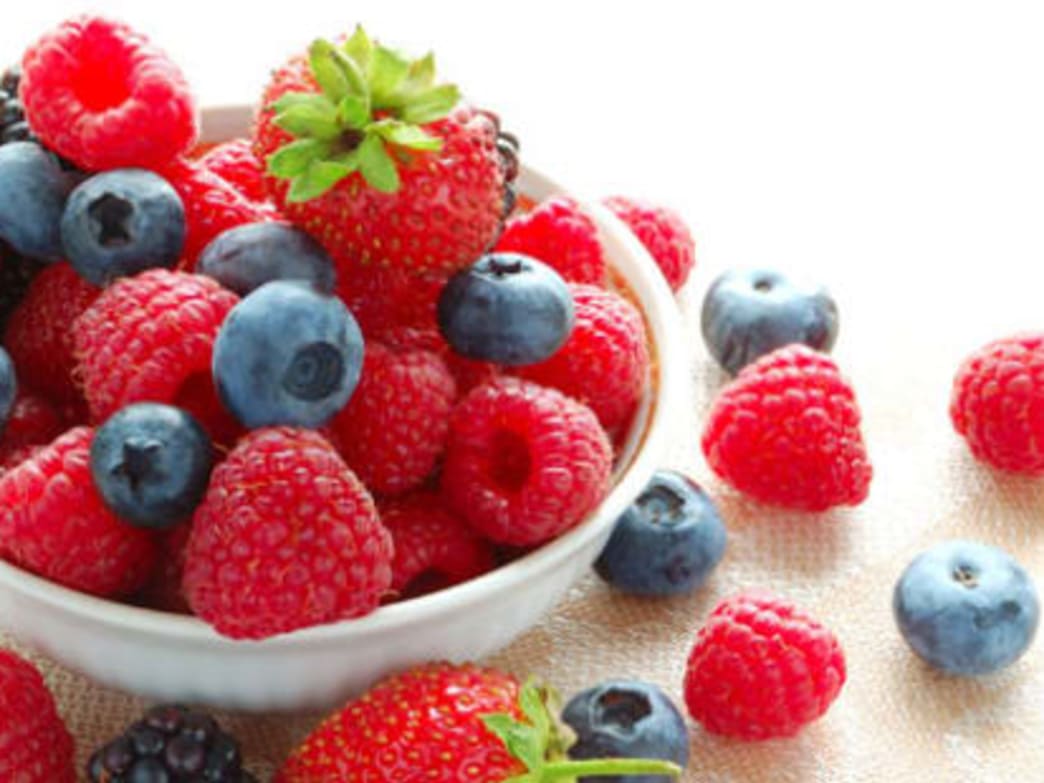
The benefits of anthocyanins extend beyond their impact on our internal health. These potent pigments can also work wonders for our skin, promoting a youthful glow and protecting against the visible signs of aging.
Anthocyanins and Skin Health, 7 purple foods bursting with anthocyanin benefits
Anthocyanins are powerful antioxidants that combat free radicals, which are unstable molecules that damage cells and contribute to premature aging. They protect the skin from sun damage, a major culprit in wrinkles, fine lines, and age spots.
- Studies have shown that anthocyanins can reduce the production of collagenase, an enzyme that breaks down collagen, the protein responsible for skin elasticity and firmness.
- Anthocyanins can also stimulate the production of hyaluronic acid, a natural humectant that helps keep skin hydrated and plump.
Purple Beauty Products
The beauty industry has recognized the potential of anthocyanins, incorporating them into a range of skincare and makeup products.
- Purple-hued serums, creams, and masks often contain extracts of purple fruits and vegetables like blueberries, blackberries, and grapes. These products aim to brighten skin tone, reduce hyperpigmentation, and improve skin texture.
- Some makeup brands have even incorporated anthocyanin-rich ingredients into their products, such as lipsticks and eyeshadows. These products are often touted for their antioxidant properties and ability to enhance the natural vibrancy of the skin.
The Cultural Significance of Purple
Throughout history, purple has been associated with royalty, power, and spirituality. The color’s rarity and difficulty to obtain made it a symbol of wealth and prestige.
- In ancient Rome, purple dye was reserved for emperors and senators.
- In the Middle Ages, purple was the color of choice for religious figures and monarchs.
Last Point
Incorporating these seven purple foods into your diet can be a delicious and rewarding journey. By embracing the vibrant colors of nature, you can tap into the power of anthocyanins and potentially improve your overall health and well-being. Remember, dietary diversity is key, and adding these purple powerhouses to your plate is a great way to enhance your nutritional intake.
So, go ahead, embrace the purple, and let your taste buds and body thank you!


